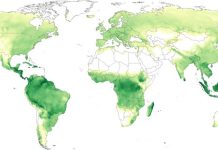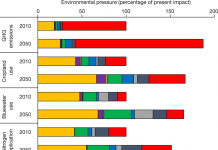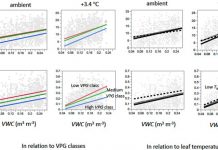日前,来自英国詹姆斯 赫顿研究所和阿伯泰 邓迪大学的研究小组研发出一种新型的透明土壤,可帮助科学家更好地观察了解植物生长时的根系变化。相关研究发表在《PLoS综合》上。
据英国媒体11月6日报道,透明土壤是研究小组通过两年时间潜心研发出来的。这种土壤的制造材料是一种被称为全氟磺酸物的化学物质,这种物质通常用来生产燃料电池,植物在这种物质中可以像在普通土壤中一样正常生长。
事实上,新型透明土壤本身并不透明,只有吸收足够水分饱和后才会变成透明土壤。从物理学和生物变量的角度分析,这种土壤和真实的土壤很相似,它可以保持水分和营养成分以供植物生长所需。
参与研究的詹姆斯 赫顿研究院生物学家莱昂内尔 杜派表示:“有了这种新土壤,科学家们就可以更好地观察土壤的变化。我们会在土壤中发现很多新奇的东西,这是多么有趣的事情。”
研究小组称,新型土壤对于研究植物根系会起到关键作用,并且这项发明可促进许多领域的科学 研究。“例如土壤病原体的传播和扩散,观察植物根系遗传基因的外在表现,以便让农民较少地依赖化肥、更有效率地种植出农作物,”杜派说。另外,生态学家还 可以利用这种透明土壤进行微环境试验,了解不同物种的交互作用。(来源:羊城晚报)
Helen Downie Nicola Holden Wilfred Otten Andrew J. Spiers Tracy A. Valentine Lionel X. Dupuy. Transparent Soil for Imaging the Rhizosphere. PLoS ONE 2012 7(9): e44276. doi:10.1371-journal.pone.0044276.
Abstract
Understanding of soil processes is essential for addressing the global issues of food security disease transmission and climate change. However techniques for observing soil biology are lacking. We present a heterogeneous porous transparent substrate for in situ 3D imaging of living plants and root-associated microorganisms using particles of the transparent polymer Nafion and a solution with matching optical properties. Minerals and fluorescent dyes were adsorbed onto the Nafion particles for nutrient supply and imaging of pore size and geometry. Plant growth in transparent soil was similar to that in soil. We imaged colonization of lettuce roots by the human bacterial pathogen Escherichia coli O157:H7 showing micro-colony development. Micro-colonies may contribute to bacterial survival in soil. Transparent soil has applications in root biology crop genetics and soil microbiology.







